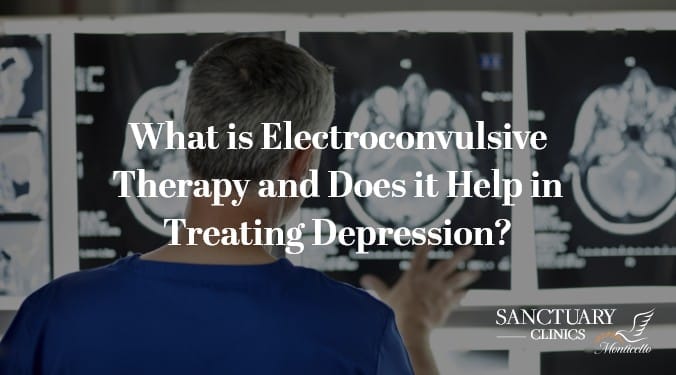In modern healthcare, electroconvulsive therapy is reserved for patients who have not had much luck in the other forms of treatment programs. The patient is sedated under general anesthesia, together with a muscle relaxant which keeps them from having any vigorous motion which could cause harm. A mild electrical current is then passed through the patient’s head, causing a brief controlled seizure which typically lasts a couple minutes.
ECT has been indicated for use in severe cases of depression, bipolar disorder, and catatonia. This is especially so when the patient is unresponsive to medical treatment or has adverse reactions associated with other forms of therapy. It is also reserved for patients experiencing acute feelings of suicide and need rapid treatment. Most anti-depressive medications take a few weeks to be sufficiently effective.
The history of ECT
Electroconvulsive therapy (ECT) is a treatment modality which has been around since the 1930s when its use was first discovered. Ugo Cerletti, an Italian psychiatrist, first used it to treat mental illness, and it quickly replaced the other modes of treatment at the time. Ever since, electroconvulsive therapy has advanced, coming to bear little resemblance to the first procedure done by Ugo. Initially, the treatment was done by passing a strong electrical current through a patient using electrodes placed on either side of the head. The aim was to induce a generalized seizure, but the current was so high it would often lead to vigorous convulsions which would risk the patient breaking their bones or biting their tongue.
Electroconvulsive therapy has come a long way since, currently bearing little resemblance to the ancient procedure done by Ugo Cerletti. However, the procedure has accrued negative stigma due to the inaccurate dramatizations of its nature portrayed on entertainment screens around the world. What is seen in movies is grossly misguided and does not reflect the actual practice. ECT has been shown to be a safe and effective treatment for many psychiatric disorders including depression, and its practice is done in a humane and professional manner, nothing like what is shown in entertainment media.
How does ECT work?
The exact mechanism of function is not fully understood, but it is known the electrical activity alters brain chemicals, more specifically hormones and neurotransmitters, stimulating their release and improving their flow in the brain. Chemicals involved include serotonin, dopamine, adrenaline, and epinephrine.
How long is the ECT treatment?
At the start, treatment is usually done two to three times a week for several weeks. This may go on for months depending on patient symptoms and disease progression. Most patients show significant improvement within months of treatment and some even report improvement after their first ECT session. Some patients require occasional sessions throughout their lives to help with exacerbations of symptoms.
What is the procedure of ECT?
The process involves having the patient being seen by a psychiatrist who confirms the therapy and will perform the ECT procedure. This is followed by a thorough evaluation of the patient confirming they are eligible for the procedure. Some of the tests done include:
- Blood and urine tests like complete blood count, thyroid tests, and kidney function tests
- Imaging tests on the skull, brain, and spine which include x-rays and computed tomography (CT) scans
- Electrocardiogram
Then, patient education is done on the risks and benefits of the procedure and consent is sought. The patient is then put on general anesthesia, which means the patient will be asleep, and will get a short-term sedative and a muscle relaxant. Once the patient is satisfactorily sedated, electrodes are placed in one of the following ways:
- Right uni-lateral – both electrodes are placed on one side of the head
- Bi-frontal – electrodes are placed on either side of the head above the eyebrows
- Bi-temporal – electrodes are placed on the temples of the head on either side
The electric stimulus is then delivered. It typically measures 0.4 to 0.8 amps which run for a brief period of duration of milliseconds to a few seconds, if need be. The current causes a burst of electrical activity in the brain where the brain cells fire rapidly. This is called an induced seizure. This electrical activity alters the chemical and electrical components leading to improvements in their function. Once the seizure stops, the patient is wheeled to the recovery room where their vital signs are monitored as well as any side-effects to the therapy. Typically, patients are be back on their feet within an hour of completion of a session and leave the hospital shortly after that.
What are the benefits of ECT?
ECT has significant benefits. They are:
- It is effective. It treats mood disorders such as depression in patients who cannot tolerate other forms of treatment
- It is a safe procedure. Thanks to modern techniques e.g. anesthesia, muscle relaxants, and control of electrical stimulus, ECT has become one of the safest therapeutic procedures even among those with heart conditions who can be prepared and monitored adequately before and after the session
- It is safe for pregnant women.
- It works rapidly. Most patients report improvement after three to five sessions, with some noting changes after even the first session.
- It works especially well in combination with medical treatment.
Does ECT have any side effects?
Like any therapeutic procedure, there are risks and side effects involved in its use. Side-effects reported after the procedure tend to be mild. Here are the major ones:
- Body ache
- Fatigue
- Nausea
- Short-term memory loss
- Heart effects
Of most significance is short term memory loss which is seen in most patients receiving this treatment. Patients commonly report a lack of recall of the events surrounding the ECT session, but this improves with time, and the patient may begin to remember events gradually as time unfolds. Another is the effect ECT may have on the heart. Our hearts depend on an autonomous electric circuit which keeps them beating regularly whether it beats fast or slow. Therefore, an electrical stimulus may threaten to disrupt that circuit, leading to an arrhythmia. This is however, a very rare occurrence. Certain people among the populous with prior history of heart conditions and associated comorbidities ought to confirm with their healthcare practitioner about whether they are fit for the procedure.
ConclusionIn summary, electroconvulsive therapy (ECT) is a treatment modality which has been in use for quite a while and has grown tremendously into what it is today in modern healthcare. It is a very safe and effective treatment reserved for those who are unresponsive to other first line forms of therapy, i.e., psychotherapy and medication. It is typically used to treat severe depression, bipolar disorder and catatonia. The exact mode of action of ECT is not fully understood, but its effects are well documented, and have been replicated in numerous patients all over the world. There is social stigma surrounding ECT which can be attributed to its negative and inaccurate portrayal in entertainment media. Despite having a few side effects, the benefits of the procedure outweigh the risks making it a safe, reliable, and effective mode of treatment.









